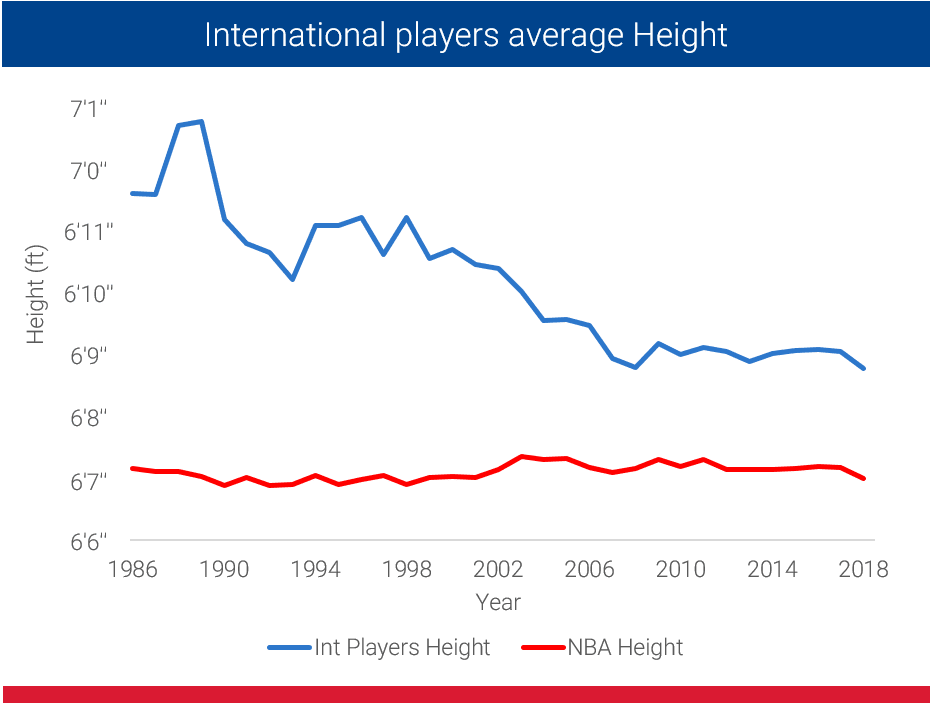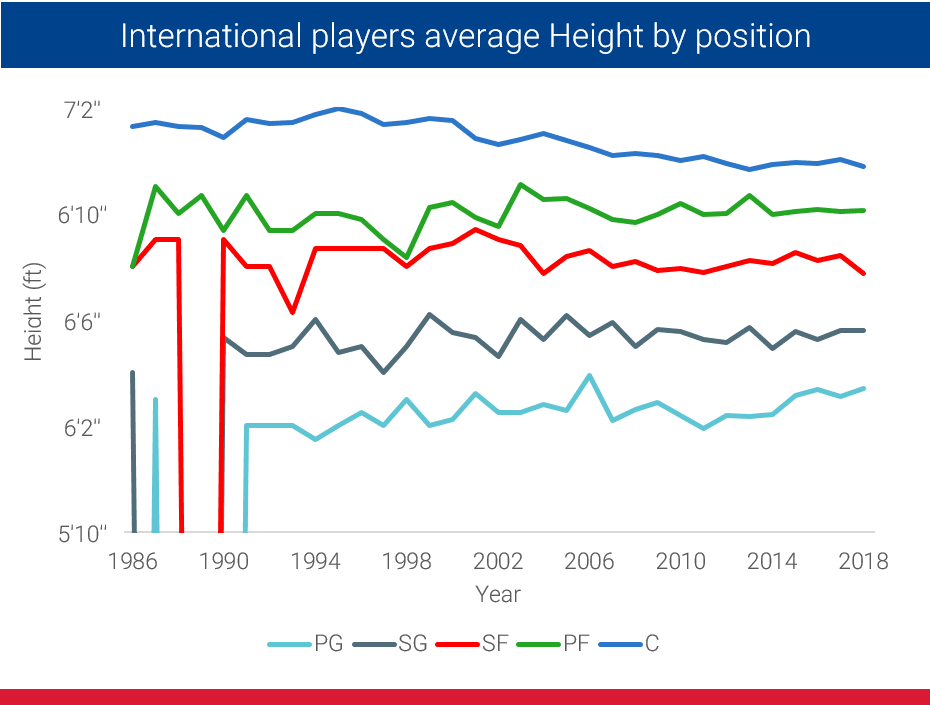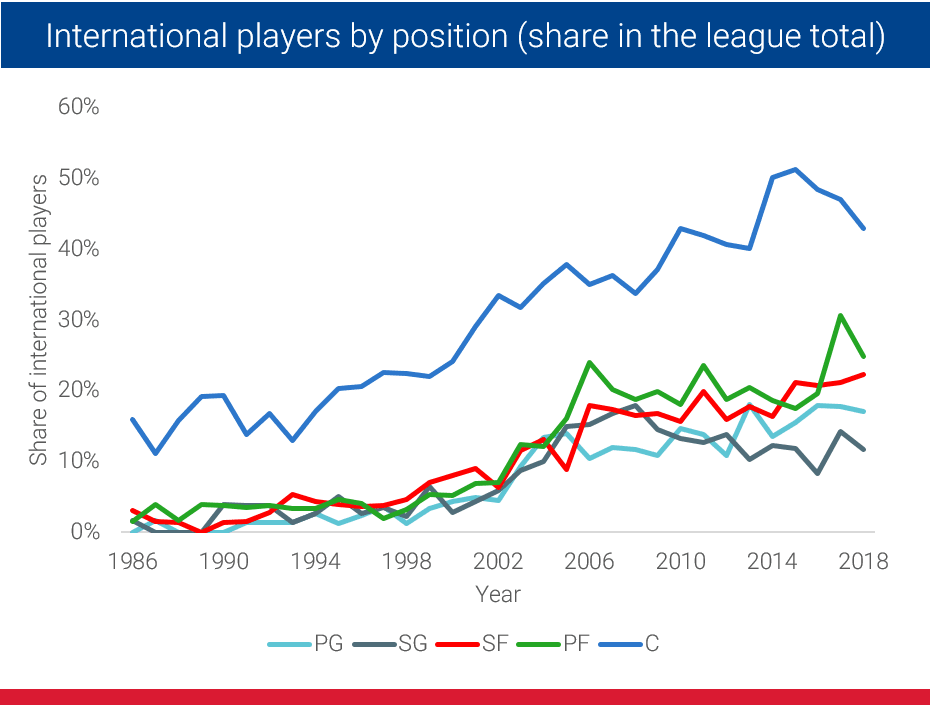By Stefan Djordjevic/ info@eurohoops.net
The first international player to join the NBA League was Hank Biasatti, an Italian-Canadian, way back in 1946 but it was more than four decades later that the international players started to take a more important role in the league, especially after the USA’s ‘Dream Team’ was allowed to participate in the Olympic games in 1992.
There were 23 players included in the NBA rosters in 1992 and that number kept rising to the day. In fact, the 2016-17 season featured record-high 113 international players from 41 countries while last season (2017-18), there were record-high 62 international players in the playoffs.
The Runrepeat.com team led by former player and assistant coach Dimtrije Curcic conducted a research focused on height evolution in the NBA and one part of the research specifically analyses the role of international players.
Intriguingly, according to the research, the major part of international players joining the NBA were occupying the ‘Big Man’ role and although that has changed slightly over time, the centers still take priority compared to other positions.
It also notes that, while the small ball revolution has greatly influenced the general profile of players, the international ‘Big Men’ were, in fact, the ones to pave the way for it due to their superior technical skills in addition to their height.
Here is the part of research focused on international players conducted by Runrepeat:
The last aspect covered in this research is about international players. Since the 1985-86 season, which was the first season with 10+ international players in the league, they have become an integral part of the NBA, and are constantly growing in numbers with each passing season.
The reason why exploring foreign players could be interesting is apparent right from the height evolution chart.

While the average NBA player height was pretty much revolving around 6’7” since 1986, international players have suffered more dramatic height changes. In the beginning, the NBA was “accepting” only international big-men in the league.
And even when the league expanded height range of “acceptable” international players, it’s noticeable from the charts that they’re still taller than the league’s average, although the gap is narrowing over the years.

Looking at the number of foreigners in the NBA, although the average height is in declining, international big-men are still the most wanted in the league.

Overseas countries are holding a monopoly over the 7-footers in the NBA – over 50% of the players above 7’0” were coming from abroad over the last 20 years.

It’s pretty easy to conclude that the center position is on demand when international players in the NBA are of concern.

Today, more than 40% of the NBA centers are not USA citizens. However, this number is declining over the last couple of years. Why?

Over the years, big men coming from abroad, particularly from Europe, have proved to be more skillful with the ball in their hands. They’re educated to play a team basketball, share the ball and learn to read the game.
This is visible on the charts – since the new millennia, when the centers slowly but surely started getting more involved in the flow of the game, by setting pick&rolls and “migrating” outside of the paint, they needed to develop a new skill set, one that the European centers already possessed.
In some way, it was the international big men who made the small-ball revolution possible. In the last few years, we’re facing a slight decline in the share of foreign centers among the NBA players, as the USA centers started to catch up with the overseas colleagues, skill-wise.
Important Note
- For the international players segment,the 1985-86 season was chosen as a starting point, since it was the first season with more than 10 international players in the league.


